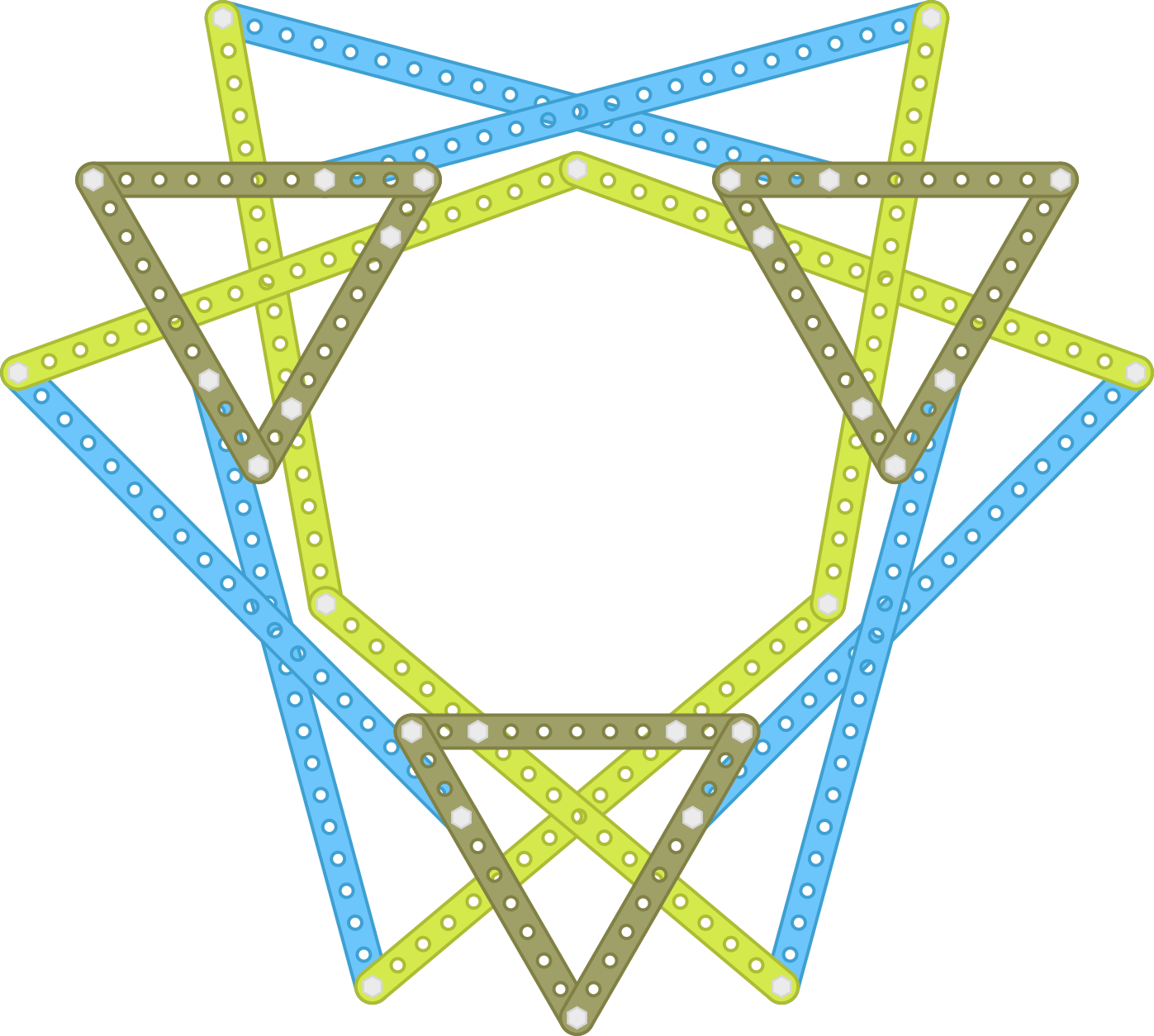You are given 21 Meccano strips, where the distance between adjacent holes is 1 unit:
- 9 strips of length 10 (hence having 11 holes)
- 6 strips of length 18 (19 holes)
- 6 strips of length 19 (20 holes)

By inserting nuts and bolts in the holes so as to form hinges between the strips, it is possible to create a rigid framework where
- portions of nine different strips form a perfectly regular nonagon of side length 6 (with vertices coincident with hole centres)
- no strip is redundantly long, i.e. all end holes are part of some hinge linking at least two different strips
Can you find this rigid framework and prove its rigidity?


